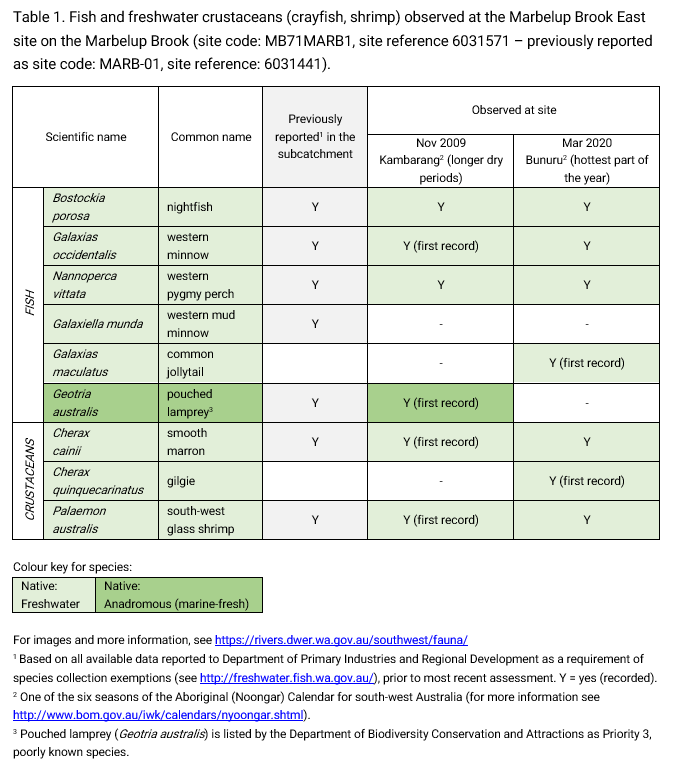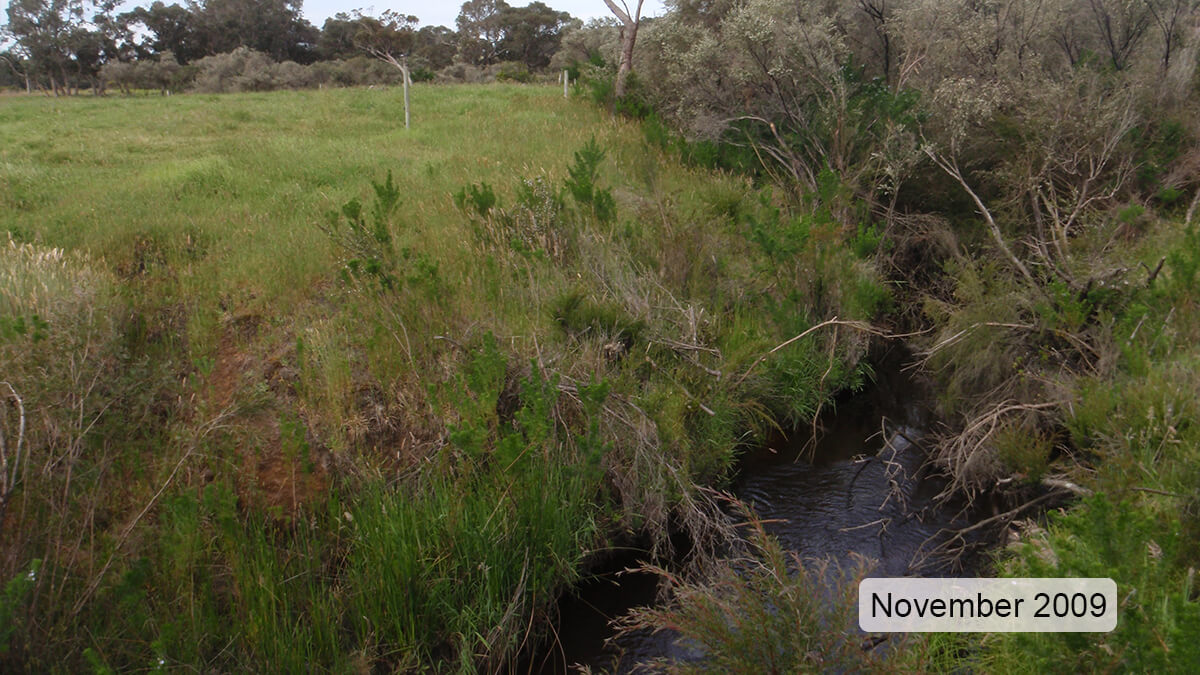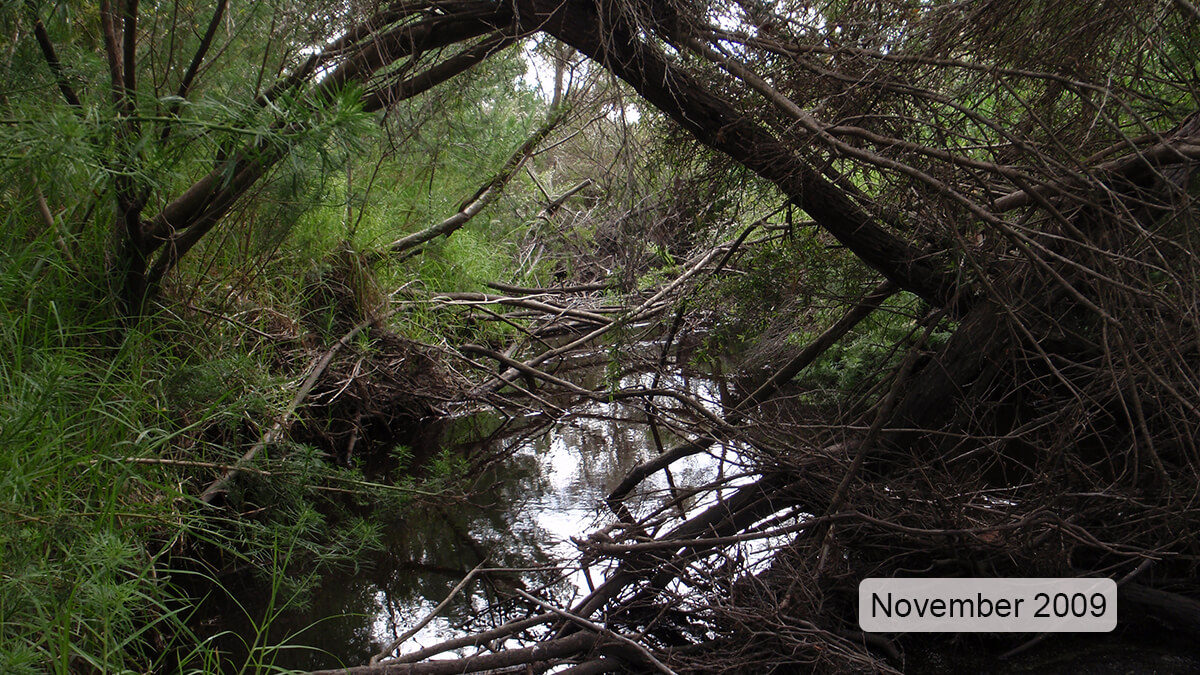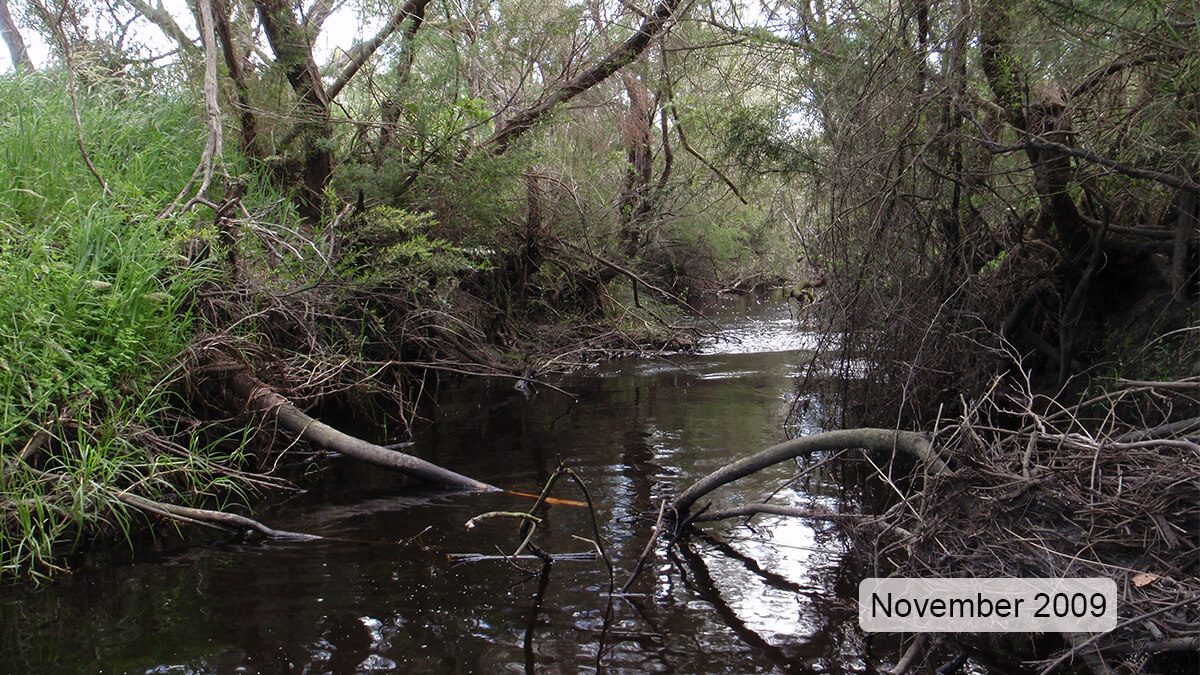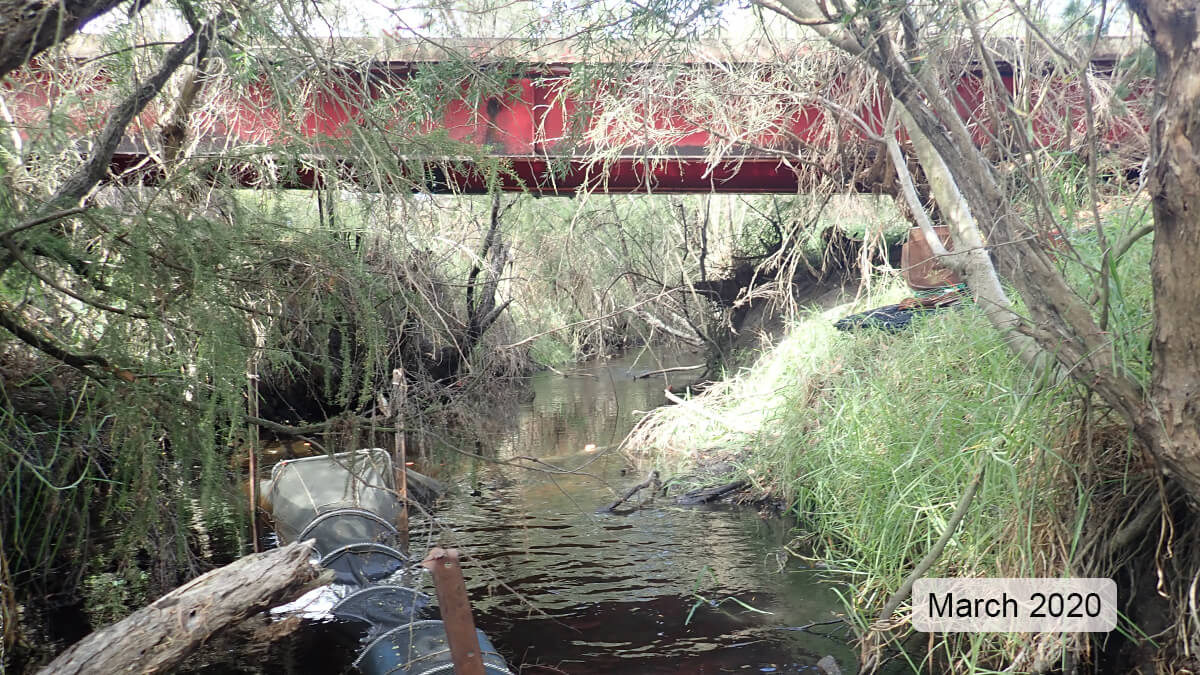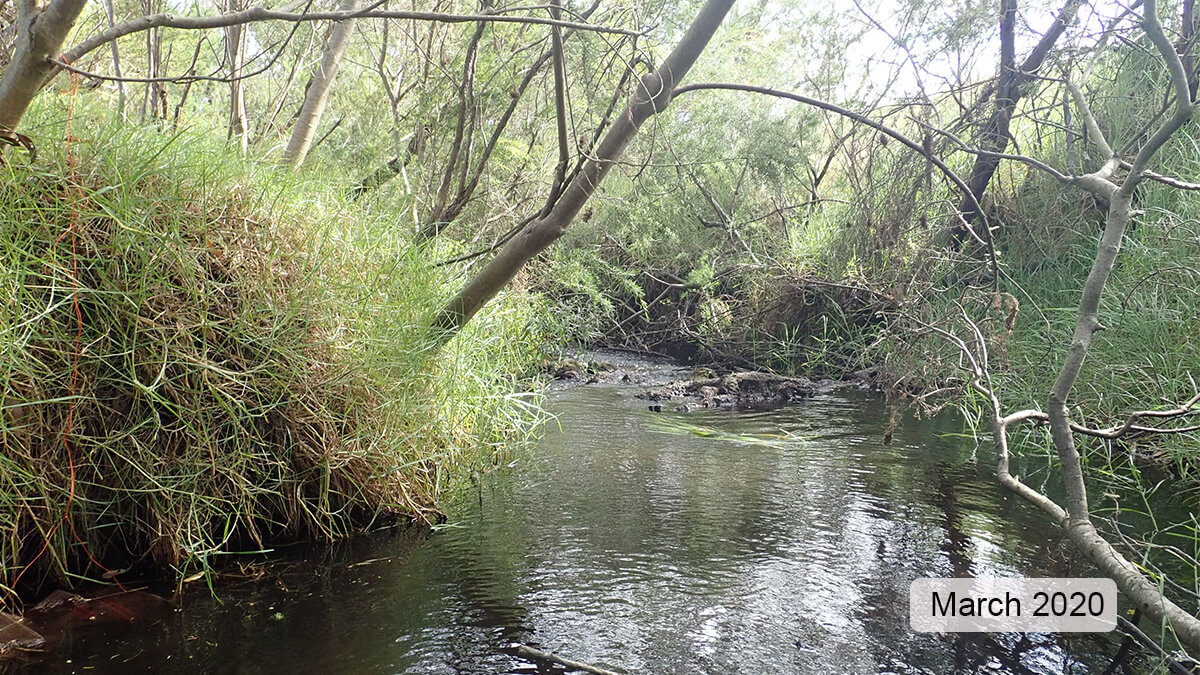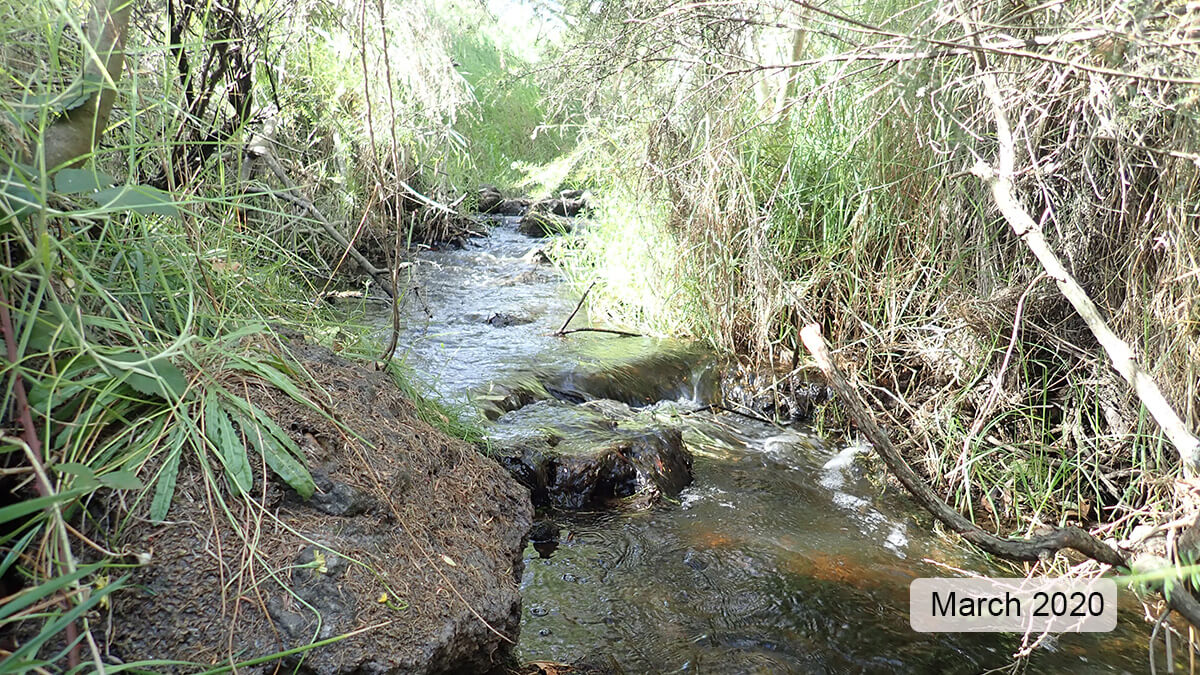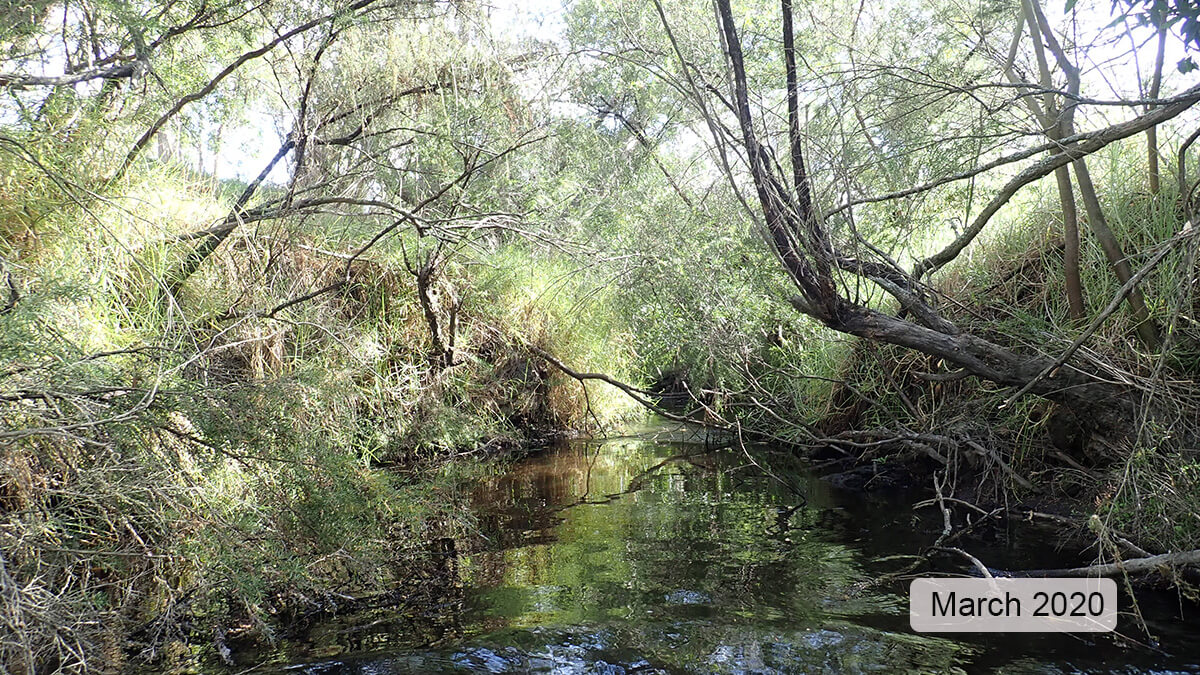
Marbelup Brook - Marbelup Brook East
Basin : Denmark Coast
Catchment : Marbelup Brook
River condition at the Marbelup Brook East site (site code: MB71MARB1, site reference: 6031571 – previously reported as site code: MARB-01, site reference: 6031441) on Marbelup Brook has been assessed as part of the Healthy Rivers Program (Healthy Rivers), using standard methods from the South West Index of River Condition (SWIRC). The SWIRC incorporates field and desktop data from the site and from the broader catchment. Field data collected include the following indicators, assessed over approximately a 100 m length of stream:
-
- Aquatic biota: fish and crayfish community information (abundance of native and exotic species across size classes, general reproductive and physical condition) and macroinvertebrates
- Water quality: dissolved oxygen, temperature, specific conductivity, and pH (logged in-situ over 24 hours), as well as laboratory samples for colour, alkalinity, turbidity and nutrients
- Aquatic habitat: e.g. water depth, substrate type, presence of woody debris and detritus, type and cover of macrophytes and draping vegetation
- Physical form: channel morphology, bank slope and shape, bioconnectivity (barriers to migration of aquatic species), erosion and sedimentation
- Fringing zone: width and length of vegetation cover within the river corridor and lands immediately adjacent, structural intactness of riparian and streamside vegetation
- Hydrology: measures of flow (velocity) at representative locations (compared against data from stream gauging stations within the system)
- Local land use: descriptions of local land use types and activities (compared against land use mapping information for the catchment)
This is the second assessment of this site using the SWIRC methods. Assessments are listed below:
- 2020 – summer (10-11 Mar): Healthy Rivers
- 2009 – spring (9-10 Nov): Healthy Rivers
Other department data: The river health site is approximately 3.7 km upstream of the departments Elleker flow gauging station (site reference: 603001), which has been in operation since 2012.
Search on the site code or site reference in the Department of Water and Environmental Regulation’s Water Information Reporting (WIR) system to find data for this site and nearby sampling points (flows, surface water quality, groundwater monitoring, the department's meteorological data). See also the Bureau of Meteorology website for additional meteorological data for the area.
Condition summary
A complete condition summary for this site has not yet been published. Please contact the department’s River Science team for site data (please provide the site code and sampling dates).
The previous assessment of this site in 2009 was part of a national assessment of river condition – view report here.
An overview of aquatic species found at the site is provided in the next section.
Species found in subcatchment
Native Species
Species found at the site
Fish and crayfish
Eight native species were recorded at this site across the 2009 and 2020 assessments. This includes four native fish (nightfish, western minnow, western pygmy perch, common jollytail) and three native crustaceans (smooth marron, gilgie, south-west glass shrimp). Western mud minnow are expected in the subcatchment but were not recorded at this site. Previous reports of this fish show that they are generally located further upstream in the subcatchment.
Notably no non-native species were recorded during assessments.
A juvenile pouched lamprey (50 mm long), also known as an ammocoete, was recorded in November 2009. Lamprey are not often encountered given their short migration periods and prolonged sedentary larval phase where they burrow in to sediments and filter-feed for up to four years (though they will occasionally move in and out of sediments). Recording an ammocoete is particularly significant and highlights that this area is an important nursery habitat prior to metamorphosis when it will migrate to the ocean during high seasonal flows. The absence of lamprey from the March 2020 assessment is not a significant concern as this is outside of their short migration period and any ammocoetes will likely be burrowed in sediments.
Pouched lamprey are categorised as Priority 3 species (Poorly-known) under the Biodiversity Conservation Act 2016 (Western Australia). Priority 3 refers to possibly threatened species where data is insufficient to assess threatening processes that could affect them, also noting that this species is not expected to be under imminent threat based on available data.
Only fish and freshwater crustaceans (crayfish and shrimp) that typically inhabit river channels are targeted by the standard SWIRC sampling methods.
Note: collection of fauna from inland aquatic ecosystems across Western Australia requires a license from the Department of Primary Industries and Regional Development (DPIRD) and also the Department of Biodiversity, Conservation and Attractions (DBCA). All species collected must be reported to these agencies as part of license conditions.
Aquatic macroinvertebrates
Macroinvertebrate sampling occurred during the November 2009 assessments. Please contact the department’s River Science team for site data (please provide the site code and sampling dates).
For more information on other aquatic species, please see the River Science fauna page here.
